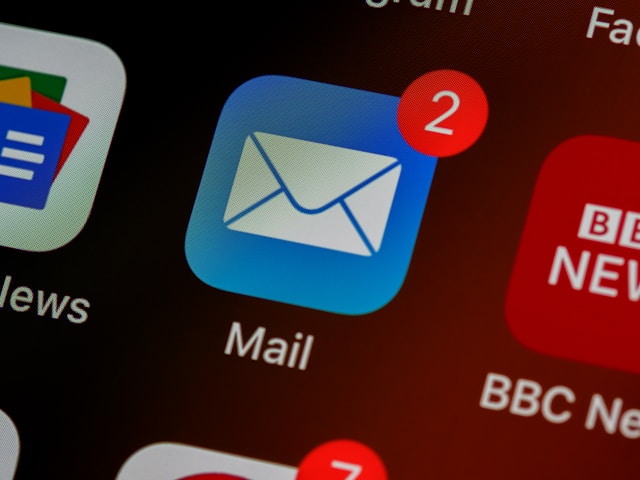
You juggle pitches, drafts, and client edits. You need a system that works while you write. AI email marketing gives you that system. It turns scattered messages into consistent campaigns that greet new subscribers, follow up with prospects, and reconnect with past clients. Recent benchmark reports show welcome emails outperform regular newsletters on opens and clicks.
Think of this as a field manual for freelance writers. You will set clear outcomes, map a simple tool stack, and ship one sequence at a time. You will also learn how to segment your list, test subject lines, and read basic analytics. Keep it practical, light, and moving.
Everything I’ve shared here—and more—is in my book, available on Amazon. Click the link if you’re ready to take the next step.
AI Email Marketing Fundamentals for Freelance Writers
Your inbox should feed your pipeline, not drain it. Learn how to set clear outcomes, pick a lean stack, and turn tight briefs into send-ready drafts.
Define Clear Outcomes for Each Campaign
Every sequence needs a single job. A welcome flow can aim for replies or booked intro calls. A nurture series can point readers to case studies or a pricing page. A re-engagement path can ask inactive subscribers if they want to stay. Tie each campaign to one metric such as reply rate, click-through rate, or bookings. That focus simplifies copy choices and helps you judge success with clean data.
Campaign Goals Table. Use this to set one job and one metric per flow.
| Flow | One Job | Primary Metric | Single CTA |
| Welcome | Start a conversation | Reply Rate | Hit reply with one question |
| Nurture | Build authority and interest | Click-Through | View a case study |
| Re-engagement | Confirm interest or remove cold | Reply Rate | Stay subscribed or unsubscribe |
| Post-Project | Capture proof and referrals | Testimonial Rate | Share a short testimonial |
Add a tiny target under the table to guide edits. A welcome flow might aim for 3 percent replies or one booked call per 200 sends.
Map a Lean Tool Stack and Workflow
Pick a marketing automation platform you can master in an afternoon. ConvertKit, MailerLite, and ActiveCampaign suit solo operators. Add a simple CRM or a spreadsheet to track contacts and stages. Use Zapier or native integrations to connect your opt-in form, calendar, and CRM so subscribers get tagged, enrolled, and logged without manual work.
Protect deliverability early. Authenticate your sending domain with SPF, DKIM, and DMARC. Use permission-based lists, a visible unsubscribe, and a physical address to maintain compliance. Clean your list every month. Remove hard bounces and contacts who never open. Send from a consistent address and use a real name. Consider double opt-in to protect list quality. These basics keep your domain healthy, which lifts opens and keeps messages out of spam.
Use AI Email Marketing to Turn Briefs Into Drafts
Treat every send as real client work. Outline the audience, the pain you solve, the action you want, and one promise. Use your AI assistant for a rough first pass. Tell it how you sound, how long to write, and how to format. Keep paragraphs short, language simple, and the call to action singular. Finish by adding your examples and quick client wins to earn trust.
Add texture that only you own. Mention the services you deliver, the industries you know, and the results you helped produce. Insert a small case snippet with a number. Those details build trust and push readers to reply.
AI Email Marketing Automation That Saves Time
Stop sending one-off emails between deadlines. Build simple triggers and short drips that warm leads while you focus on billable work.
Build Triggers and Drips for Client Work
Automations start with a clear trigger. A form submission, a new tag, a clicked link, or a booked call can enroll a contact in a flow. Keep your first drip simple. Three emails over seven days work well. The first delivers the promised lead magnet. The second shares a relevant case study or portfolio sample. The third invites a light next step, such as a discovery call or an audit request.
Three-Email Drip Planner Table. Copy this plan for your first flow.
| Day | Purpose | CTA | Primary KPI |
| Day 1 | Deliver the promised asset | Download or confirm | Click-Through |
| Day 3–4 | Build authority with proof | View case study | Click-Through |
| Day 7 | Invite a light next step | Book a discovery call | Reply Rate |
Use clear exit rules so messages stay relevant. When someone books a call, remove them from top-of-funnel drips and switch to onboarding.
Sync CRM, Calendar, and Docs to Cut Clicks
Connect forms to your CRM so every lead arrives with a source tag. Push booked meetings from Calendly or Google Calendar into the same record. Store swipe files and templates in a shared folder. Keep onboarding emails, kickoff checklists, and status updates ready to paste into your platform.
A simple mapping keeps work tidy. Form to CRM with a source tag and service interest. CRM to email tool with a welcome tag. Calendar to CRM with meeting details. You capture every lead, avoid double entry, and keep follow-ups on schedule.
Set Up AI Email Marketing Autoresponders That Feel Human
Start with one autoresponder you can finish today. Write a welcome email that thanks the subscriber, names a clear benefit, and asks one question. Use your AI assistant to generate three subject lines and three short body variants. Pick the strongest version, then tune it to your voice. Keep sentences short. Make one ask. Close with your name, city, and a natural sign-off. Create a plain-text version for quick mobile replies.
Add two more automated messages. The second delivers a practical checklist or mini guide. The third shares a short client story and invites a reply. You now have an always-on path that builds trust while you tackle paid assignments.
AI Email Marketing Personalization That Wins Clients
Generic blasts get ignored. Segment by need, add light personalization, and keep your voice so the right people reply.
Segment by Role, Pain Point, and Stage
Segmentation turns a broad list into a precise one. Label subscribers by role, such as founder, marketing manager, or agency owner. Identify pain points such as brand voice, case studies, or ongoing blog production. Track stage in the relationship: new subscriber, warm lead, active client, or past client. These labels power intent-matched messages that lift click-through and reply rates.
Segmentation Matrix Table. Match the message and offer to each segment.
| Segment | Message Angle | Offer | Next Step |
| Founder | Faster path to first draft | One-page audit with next steps | Book a quick call |
| Marketing Manager | Consistent output with less risk | Monthly content package | View pricing |
| Agency Owner | White-label reliability | Retainer with turnaround tiers | Start a trial project |
Roll this out slowly. Start with one role and one pain point that show up often. Write a short variant for that pair, then expand when you see traction.
Generate Variants and Test Voice on Small Batches
Let your AI assistant draft two or three body variants for the same message. Hold the call to action constant to isolate tone. Send each variant to a small slice of the same segment. Watch opens, clicks, and replies. Pick a winner and roll it out to the rest. Save winning lines to a swipe file so future drafts begin with proven language. End tests after 24 to 72 hours or once each variant reaches a set threshold for opens, then move on.
Add AI Email Marketing Personalization Without Losing Your Tone
Personalization should feel natural. Pull in the subscriber’s first name, company, or recent action. Refer to the resource they downloaded or the article they read. Use dynamic content to swap a short paragraph based on role or pain point. Keep the rest of the message steady so your voice stays consistent across the list. Limit dynamic fields to name, company, or last action to avoid odd phrasing.
Write to one person. Use “you” throughout. Keep the promise tight and deliver on it in a few lines. Real relevance beats clever tricks every time.
AI Email Marketing Metrics, Testing, and Scaling
Guessing wastes time. Watch the few metrics that matter, run small tests, and double down on what works.
Metrics Reference Table. Track these signals and review weekly.
| Metric | Definition | Formula | Review Cadence |
| Delivery Rate | Messages that receiving servers accept | Delivered ÷ Sent | Weekly |
| Open Rate | Recipients who opened | Opens ÷ Delivered | Weekly |
| Click-Through Rate (CTR) | Recipients who clicked | Unique Clicks ÷ Delivered | Weekly |
| Click-to-Open Rate (CTO) | Share of opens that led to clicks | Unique Clicks ÷ Opens | Weekly |
| Reply Rate | Direct responses | Replies ÷ Delivered | Weekly |
| Booked Calls | Sales conversions from sequences | Calls Booked ÷ Recipients | Monthly |
Note: Apple Mail Privacy Protection can inflate opens. Use CTR, CTO, and replies to judge engagement with more confidence.
Track the Numbers That Matter to Clients
Measure signals you can act on. Delivery confirms domain health. Opens show if subject lines and from-name land in the inbox. Clicks reveal interest in your resource or offer. Replies signal conversation momentum. For service offers, track booked calls and proposals sent. For content offers, track downloads and time on page. Add UTM parameters to links to accurately attribute traffic and conversions in your analytics. Example UTM scheme: source=newsletter, medium=email, campaign=welcome_q4.
Turn metrics into moves. When opens drop, audit deliverability, review domain settings, and test subject lines. Low clicks call for a sharper call to action and clearer link placement. Slow replies? Simplify the closing question and tighten the body. Make one change per iteration to keep learning clean.
Run Simple A/B Tests and Learn Fast
Test one variable at a time. Try two subject lines that differ in structure. Keep the preview text identical. Or test the first two sentences while you hold the offer steady. Send each version to a fair slice of the same segment. End tests after 24 to 72 hours or once each variant reaches a set number of opens. Record the outcome in a short log so your playbook grows with each campaign.
Numbers help readers decide. Offers like three edits in two days or a one-page audit give shape to your promise and reduce friction.
Plan a Quarterly Review and a Reuse Library
Block two hours each quarter to review performance. Open your dashboard and CRM. Check the list growth, lead sources, and sequence results. Archive low performers. Clone winners into a reuse library. Save the best subject lines, first sentences, proof snippets, and calls to action in a living document. During busy weeks, the library speeds production and protects quality.
Add one roadmap item per quarter. Develop a re-engagement strategy for inactive subscribers. Develop a post-project sequence that requests a testimonial, a referral, and permission to share a case study. Create a seasonal series tied to trends in your niche. Small, steady releases build a system that keeps working as your client load grows.
Final Thoughts
Keep the cadence simple and repeatable. With AI email marketing, you set the schedule and let the system do the lifting. Launch a welcome series, add a short nurture, then reopen conversations with a kind nudge. Read the data, make one change, and cycle again. Results build into calls, trust, and reliable revenue.
Block ninety minutes this week to build your first automated flow. Authenticate your domain, import your list, and draft three short emails using the structure above. Turn on the automation and tag new signups to enter it. Add one segment and one small A/B test. If you want a shortcut, turn this article into a checklist and ship your welcome sequence today.


Pingback: AI Email Personalization: A Freelance Writer’s Guide - The AI Freelancer